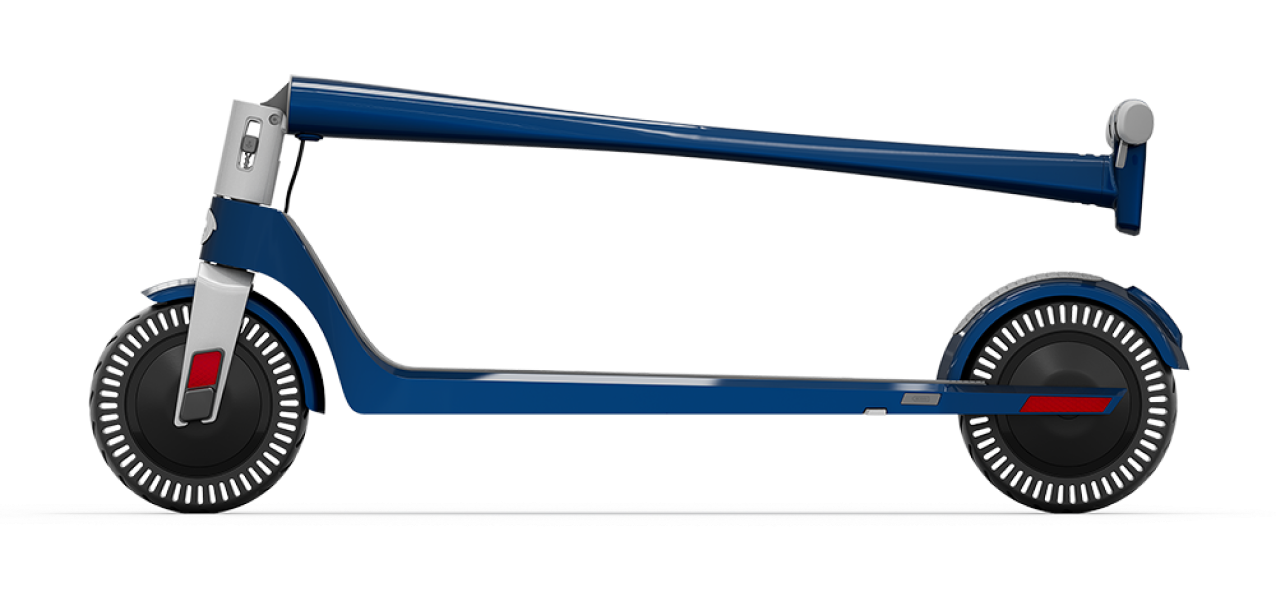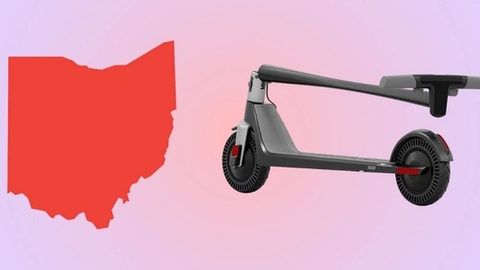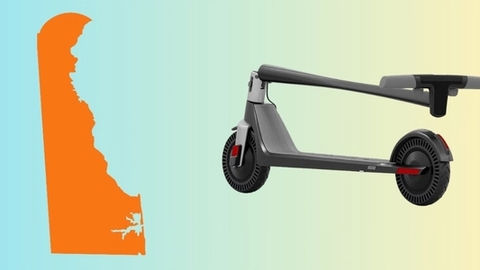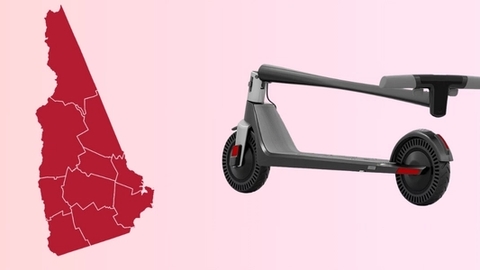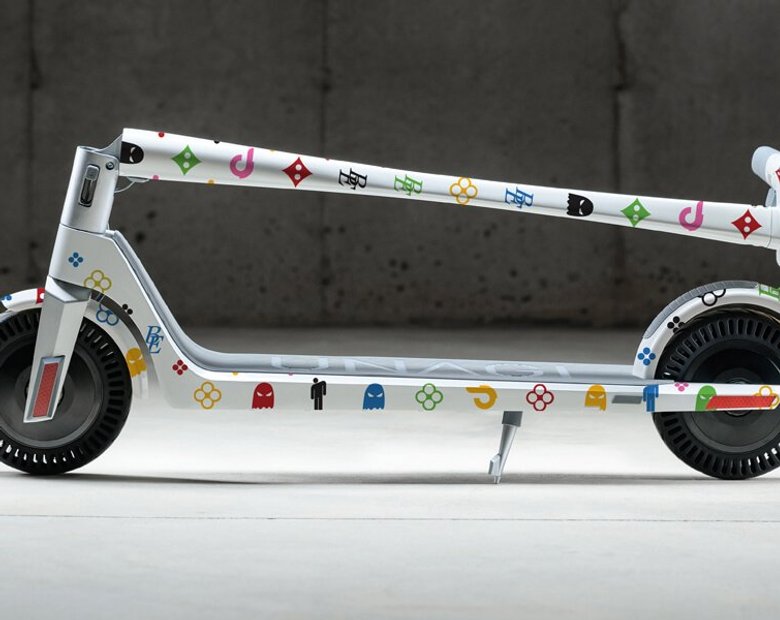Micromobility is here to stay, and it’s changing how we experience urban life for the better. With Unagi’s membership program, you can enjoy all the benefits of a top-tier electric scooter without the sky-high price of ownership or the inconvenience of ride-sharing.
Quick View: Solid Tires vs Pneumatic Tires
- Solid tires require no maintenance and never go flat
- Pneumatic (air filled tires) should be checked and topped off with air once a week. They are subject to pinch flats (if tubed) and punctures and often require a professional to change (if tubeless).
- Air filled tires can be less durable, but they are more comfortable than solid tires. They also provide better traction on wet or icy terrain.
- Tubeless pneumatic tires provide more comfortable ride quality when run at lower tire pressure.
What's a Solid Tire?
If you’re new to the world of electric scooters, “solid tires” might sound like a contradiction in terms.
After all, when we think of tires, we think of the circular, black rubber three-quarter-hollow tubes mounted on wheels and filled with air. Everything from airplanes to cars roll on air filled tires.
Whether we're on a motorcycle, bike, or e bike, almost all the tires on two-wheeled vehicles are pneumatic. E scooters are, for the moment, one of the few two-wheeled vehicles for adults to offer the choice between pneumatic and solid tires.
So, why would riders choose a solid tire over a pneumatic tire? Well, there are good reasons, and we’ll look at them below.
But first – pop quiz, what’s the first word that comes to mind when you hear “tire”? If you said “flat,” you passed. Because, yes, that’s the biggest problem with pneumatic tires and the biggest advantage of solid tires. They never go flat....
Fully Solid Tires
Some solid tires are just crude plastic circles, the kind of thing you find on children's toys. Fully solid tires provide an unforgiving ride.
Fully solid tires are found only on cheap scooters made for kids and generally offer nothing in the way of shock absorption or damping. They are also more prone to developing flat spots, which can't be fixed and require a full tire replacement.

Solid Tires with Vibration Damping
Premium solid tires use durable, high-grade materials that maintain their shape. They also tend to use a honeycomb or vented structure, with hollow areas to provide cushioning and absorb vibration.
You'll find solid rubber air pocket tires on high quality electric scooters for adults like the Unagi Model One.
The Pros and Cons of Solid Tires
Solid Tire Pros
Low Maintenance? How about No Maintenance....
The biggest advantage of solid tires comes from the fact that they require no maintenance, in contrast to the routine air pressure checks, tube and tire repairs, and flat tire anxiety pneumatic tires tend to provoke.
In fact, if you ride an electric scooter as a lightweight urban commuter vehicle on mostly well-paved roads, you might want to ride nothing but a solid tire scooter because of their ultimate ease of use.
Solid tires can be replaced. But they only occasionally need replacing if they develop flat spots or sustain damage that puts them out of round. Such events are rare compared to the frequency of pinch flats and punctures with air filled tires.
Travel Lighter
While it's a good idea to carry a small multitool with you when riding any small vehicle, a solid tire electric scooter eliminates the need to carry a full toolkit. You won't need to pack a repair kit, tire lever, extra tube, air pump, or any of the essentials needed for proper roadside pneumatic tire care.
Solid Tire Cons
Ride Quality
Solid tires do not provide as smooth a ride as pneumatic tires. They can be more jarring and uncomfortable on bumpy terrain. Pneumatic tires offer better shock absorption than their solid counterparts.
Less Traction
Solid tires have less traction than pneumatic tires, which can be a problem in wet or slippery conditions.
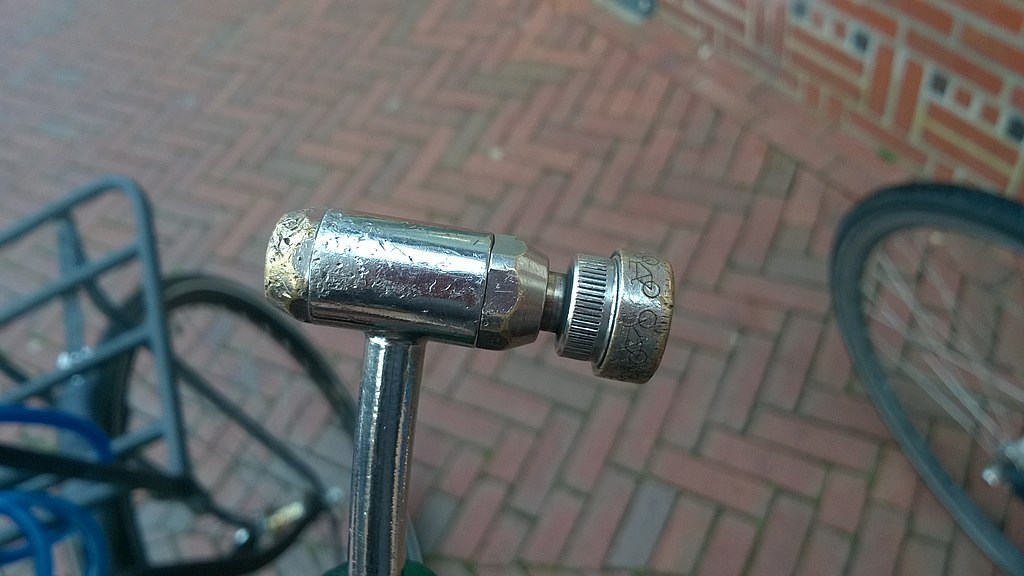
What are Pneumatic Tires?
Pneumatic tires are air-filled tires used on various vehicles, including electric scooters. They work by trapping compressed air inside, which provides cushioning and absorbs shocks, bumps, and vibrations from the road surface. This results in a smoother, more comfortable ride and generally improved traction.
There are two main types of pneumatic tires: tubed and tubeless.
- Tubed tires have an inner tube that holds the air, which is protected by an outer tire casing. If the tire gets punctured, the inner tube can be patched or replaced.
- Tubeless tires don't need a separate tube. Instead, the tire itself forms an airtight seal with the wheel rim to contain the air. Tubeless tires are generally more durable, offer better performance, and have a reduced risk of sudden deflation if punctured compared to tubed tires.
Inner Tube Tires
If you regularly ride or drive a vehicle with pneumatic tires, it's generally recommended that you check the tire pressure once a week.
While checking air pressure weekly can be burdensome and unnecessary with cars, when it comes to the smaller, low-volume tires on bikes and especially electric scooters, this routine become much more important.
That's because most air-filled tires on small vehicles contain an inner tube, the part of the tire that actually holds the air, and inner tubes require a minimum pressure to stay inflated.
Tubeless Tires
So-called tubeless tires (which, you guessed it, lack an inner tube), are standard on cars, motorcycles, and even high-end bikes. And they are becoming increasingly common as premium electric scooter tires.
The Pros and Cons of Pneumatic Tires
Inner Tube Tire Pros
Inner tube tires offer the benefit of holding the air inside the tube rather than the tire, which means that the outer tire can take a beating and the tire can stay inflated. But once the tube is punctured, it must be repaired or replaced.
Inner tubes, however, are relatively inexpensive compared to new tires, and most riders can learn to fix a flat tire themselves.
Inner Tube Tire Cons
Pinch Flats
Tubed tires must be kept at the minimum recommended tire pressure because they are subject to what are called "pinch flats," the most common type of flat tire.
A pinch flat happens when the inner tube is literally pinched between the tire and the wheel rim, resulting in two tears that look like a snakebite on the inner tube.
Pinch flats happen without warning (if you don't top off your tires), no sharp objects required.
Punctures
Next to pinch flats, punctures are the next most common cause of flat tires. All tires are subject to punctures from objects in the road, including broken glass, nails and screws, and other kinds of debris that can slice through the rubber and cloth of a tire.
Punctures in the tread areas of a tire can usually be repaired, sometimes while on the road. But if the sidewall is punctured, the tire will have to be replaced.
Tubeless Tire Pros
Many tubeless pneumatic tires are puncture resistant and even have "self-healing" properties, but no tire is 100% flat proof.
There are many good reasons to ride on pneumatic tubeless tires: with no risk of pinch flats, they can be run at lower pressures for more comfort, and they have superior puncture resistance.
At lower pressures, they also provide more surface area for contact with the road, leading to greater wet and dry traction (sometimes at the cost of more rolling resistance, i.e. slower speeds).
Tubeless tires are filled with sealant which keeps the air in at the rim, or "bead," where the tire meets the wheel. This sealant also rushes into a puncture and seals it up before much air is lost, leading to the description of tubeless tires as "self healing."
All tubeless tires have this healing property to some degree. Some use a layer of self-sealing compound inside the tire to provide additional protection.
Tubeless Tire Cons
Tubeless pneumatic tires have several benefits for the serious rider (no pro cyclist rides without them these days). They can also require a pro level of maintenance.
While the average rider can learn to change an inner tube on their scooter, mounting, sealing, and filling tubeless tires with tire sealant can be a herculean effort that is best left to mechanics.
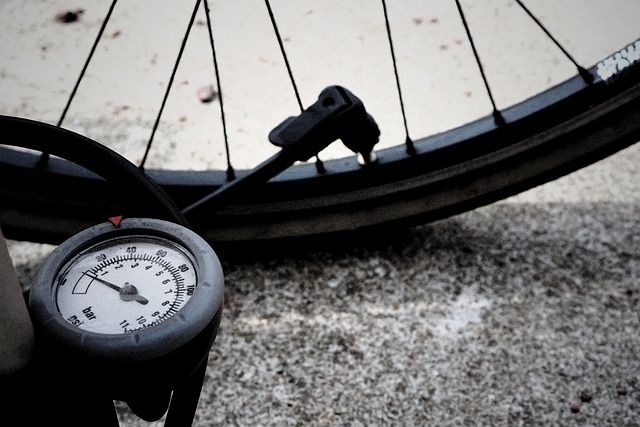
Pneumatic Tire Maintenance and Roadside Repair
Maintenance can be a pro or con, depending on how much you enjoy working with your hands. The advantages of pneumatic tires are many, but they require some level of routine care and special equipment (tire levers, spare tubes, pump, tire pressure gauge, roadside repair kit, tire sealant, etc.).
If you don't properly maintain air filled tires, the risk of flats goes up significantly. And if you don't want to end up walking your scooter home, you'll have to learn to fix a flat tire on the road.
What tires are best for electric scooters?
The best tires for an electric scooter depend on how you plan to use it and what you prioritize in your ride. Here's a breakdown:
- Pneumatic tires: If you want the smoothest ride and don't mind a bit of maintenance, go for pneumatic tires. They're ideal for longer rides, varied terrain, and riders who value comfort. However, they require maintenance and can get punctures.
- Solid tires: Maybe you hate fixing flats. If you're riding mostly for short commutes on smooth pavement and want zero maintenance, solid tires might be your thing. They can't go flat because there's no air inside. The downside? The ride is harsher. Every little bump in the road gets transmitted straight to your feet and hands.
- Solid tires with air pockets: There's a middle ground, too: solid tires with air pockets or a honeycomb structure. They lean towards the solid side, providing the advantage of zero maintenance, but with improved ride quality compared to fully solid tires. These are suitable for riders who want a balance between low maintenance and decent ride quality, especially for medium-length commutes on mostly good roads with occasional rough patches.
Conclusion
The drawbacks of solid tires are improving, with foam filled tires that offer more cushioning and traction without the maintenance.
But the fact is that there are different types of electric scooter tires for a reason, and not all tires are suitable for all types of electric scooter or every kind of riding.
If you plan to ride off road, you should buy a scooter with knobby off road tires.
If you're commuting longer distances at speeds over 20 mph, and you routinely encounter bumpy roads and bad weather, you might be best off with pneumatic road tires.
And if you're primarily an urban commuter who travels a few miles a day at lower speeds on city streets and sidewalks, and who doesn't want to bother fixing flats, then solid tires can be the best choice for you as the only maintenance free option.
Overall, the choice between solid and pneumatic tires will depend on the specific needs and preferences of the rider. If a smoother ride and bad weather traction are top priorities, then pneumatic tires may be the way to go. However, if durability and low maintenance are more important, then solid tires may be the better choice.

Stay current with the latest U.S. electric scooter laws in our 2025 guide. Updated annually since our first comprehensive guide, ensuring you have the most recent state and city regulations to ride responsibly”
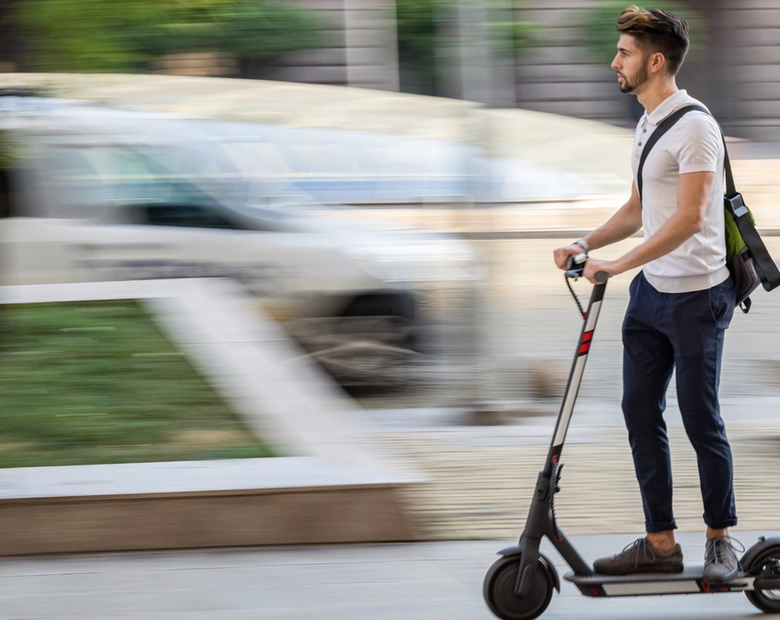
The Slack Core 920R is currently the fastest electric scooter in 2025 that you can purchase without the need for pre-order.
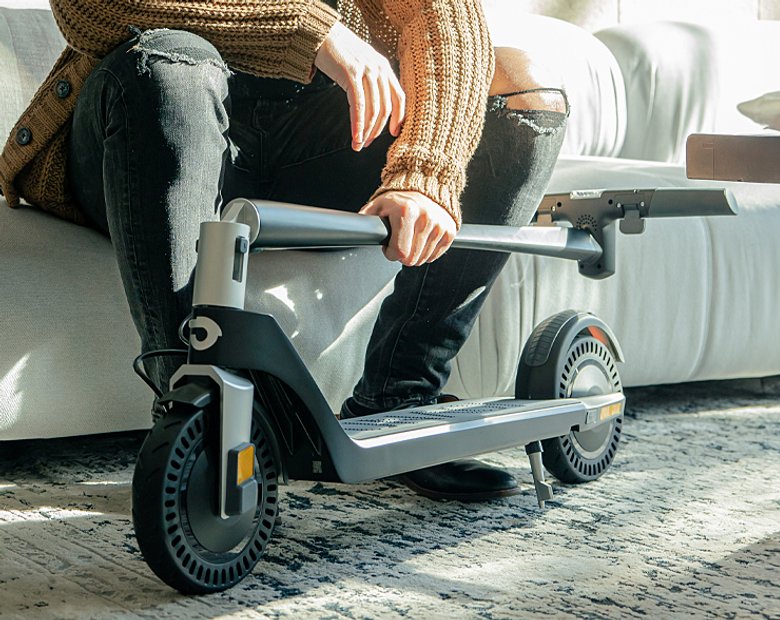
Our selection of the best electric scooters 2025 spans the fastest e-scooters to the most portable ones, the ones designed for city riding and off-road, the best scooters for rain, budget electric scooters for students, and more powerful ones for skilled riders.
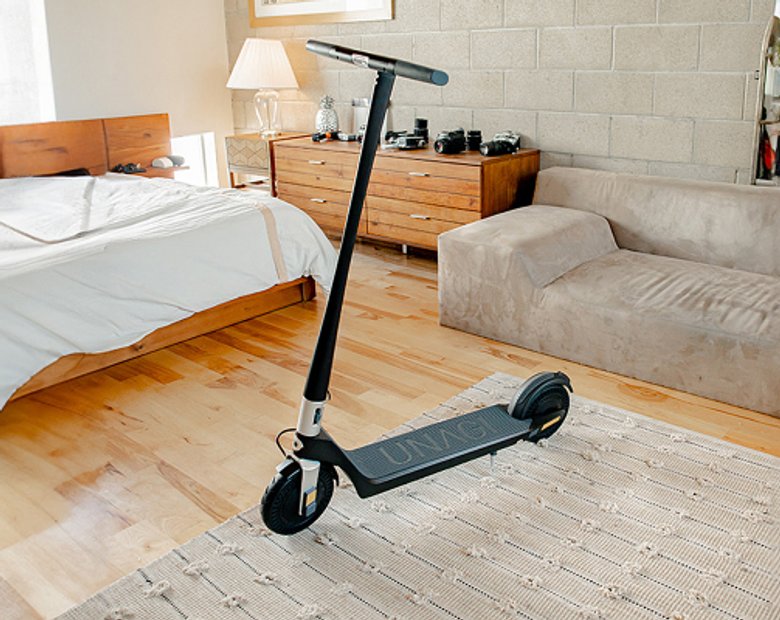
The Unagi Voyager is the best lightweight electric scooter for adults and teenagers. It is the ultraportable sequel to its predecessor, the Unagi Model One Classic.

If you're wondering whether an electric scooter with a seat is right for you, this is a detailed article that would suit your need.
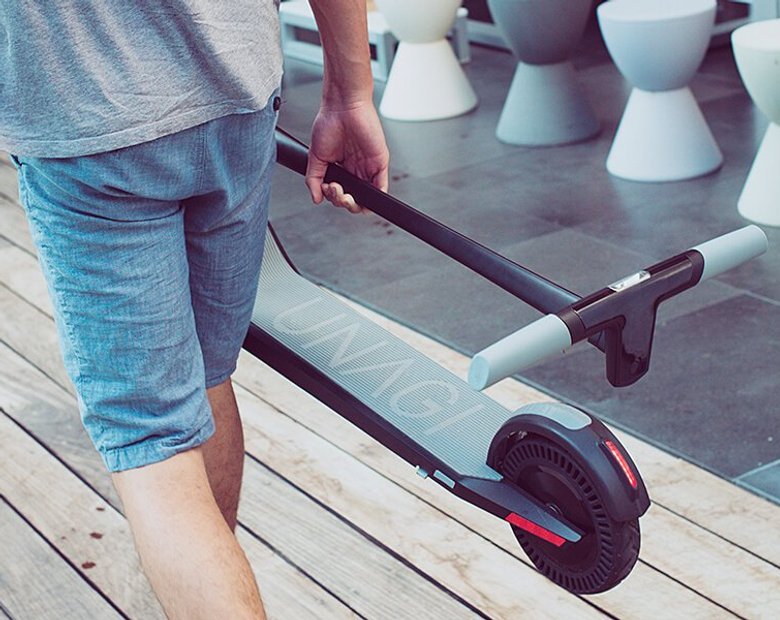
Understand which personal electric vehicle is best, the choice between an electric bike or electric scooter might already be made for you by some critical factors, including portability and storage capacity.
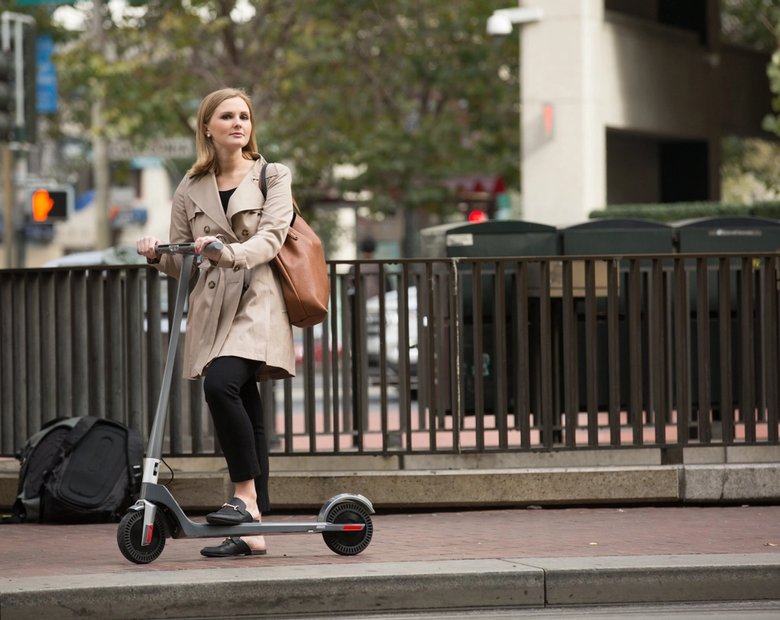
In the U.S., most states don't require a license. For those that do, they usually just ask for a regular driver's license or a learner's permit.
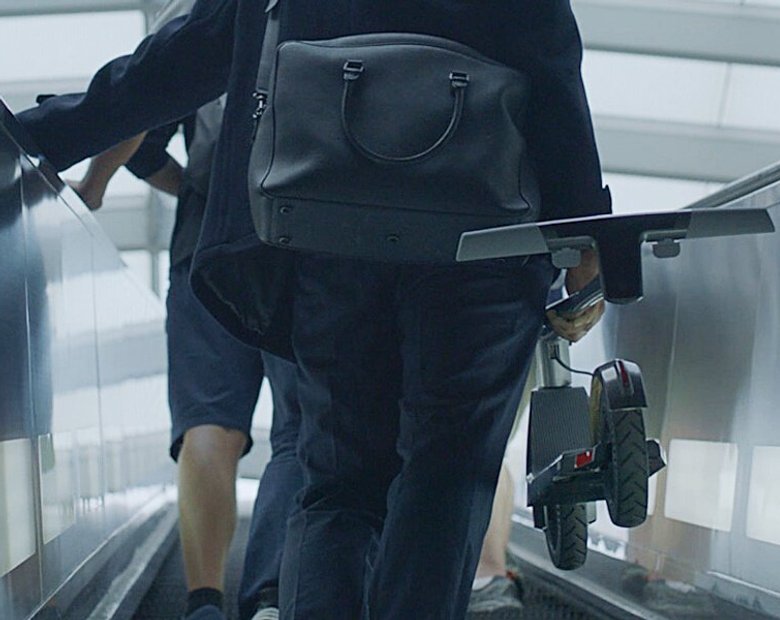
Yes, you can bring an electric scooter on a plane, but it needs to have a lithium battery smaller than 100 watt-hours, which most don't.

Manufacturers advise against riding electric scooters in the rain. The main reasons are: water can fry the electronics, make the ride dangerous, and void your warranty.

The basis and the premise of my work is that we either operate out of love or we operate out of fear...Time is currency. The coolest thing about the scooters is that it's really quick, and it goes uphill. From there, traveling more efficiently and having a good time doing it--I think that's the most important thing.

Cynthia Leu has a full plate. A tech worker by day, Cynthia spends her off time balancing the parallel lives of a powerlifter, entrepreneur, mental health advocate, and more. Riding Unagi helps this USMC veteran cut down on everyday…

https://www.youtube.com/watch?v=7m2hVBE62LY Rasheed Muhammad is sick of Los Angeles traffic. In order to preserve his sanity, Rasheed has traded his everyday driving habit for the portable and beautiful Unagi Model One. It’s an essential accessory for navigating LA streets -- and…

Rich Lee, Co-Founder of San Francisco’s SPRO Coffee Lab, wants to share his love for coffee with the world. He depends on riding Unagi to avoid the hassle of navigating the parking crunch in the booming Mission Bay neighborhood.…


